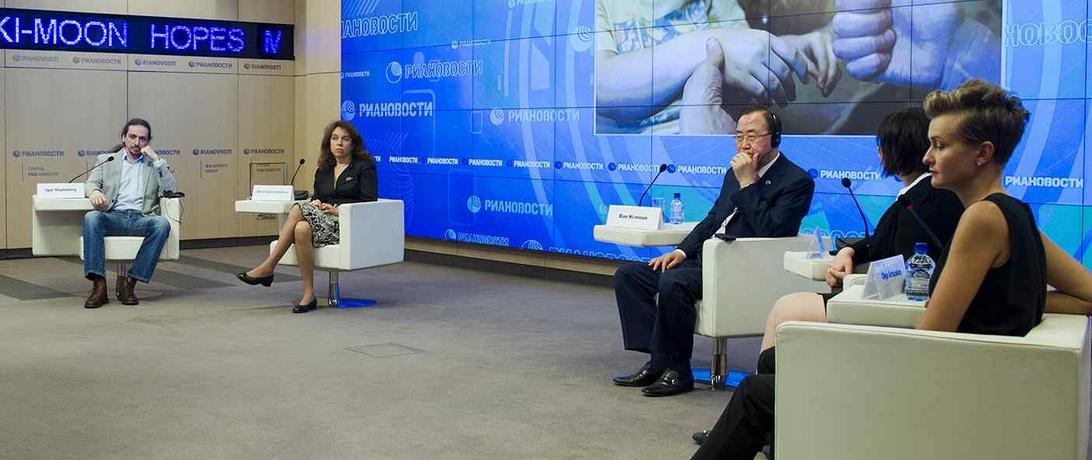
In spite of the tangible threat that social media poses to peace and security worldwide, substantive discussions of women’s role in combatting this risk are scarce. Unfortunately, whether by exclusion or accidental omission, information relating to the use and effectiveness of social media in modern campaigns – particularly sex disaggregated information – is largely missing.
The following is the second part of a two-part series on the emerging security risk of ignoring women as active participants in social media and hybrid warfare. Part I is available to read here.
Barriers to women’s involvement: the methodological and the practical
In spite of the tangible threat that social media poses to peace and security worldwide, substantive discussions of women’s role in combatting this risk are scarce. Unfortunately, whether by exclusion or accidental omission, information relating to the use and effectiveness of social media in modern campaigns – particularly sex disaggregated information – is largely missing.
In the chapter “Gender, Media and Security,” from the Routledge Handbook of Media, Conflict and Security, Romy Fröhlich identifies an important challenge to the study of women’s role in security policy:
Even though the mass media’s presentation of war, violent conflict and security (policy) is of utmost importance in the field of communication science and media studies, the numerous international empirical studies on this topic have a noticeable blind spot: there are only very few empirical gender-sensitive studies on the topic. . . The underlying thesis, which proceeds fundamentally and consistently on the basis of one-sided and stereotypical thematization and representation of women and men, both in coverage of war and conflict, and in political and military public relations, is to an extensive degree substantiated in theoretical terms and supported largely by narrative single-case analysis. And indeed, our dominant model of womanhood comprises neither technological competence nor courage or physical strength. No wonder then that violence, conflict, war and security are topics that make it especially difficult to perceive women as acting subjects.
This methodological barrier has thus far prevented the international community from identifying important associations between social media as a weapon, and women’s role in combatting it. By simply collecting gender specific information on the use of social media by women and men, it may be possible to empower women actors in a way that is both feasible and successful. For this to work, however, the international community needs to begin the process of gender mainstreaming at all levels of policy creation.
Furthermore, in addition to this theoretical barrier, women still face numerous practical barriers which prevent them from accessing social media outlets. This includes concerns over physical security, lack of technological knowledge, fear of ridicule, and a lack of connectivity. In some cases, men consciously exert control over cellular devices, out of a belief that allowing women to participate in social media is inappropriate. As gender begins to play an increasingly widespread role in high-level discussions of social media and its harmful effects, it is important to consider these additional blockades as well. As with any other systematic change, the solution must begin both from the ground up, and from the top down.
Looking Ahead
All the above isn’t to suggest that the current research on emerging warfare is useless. Indeed, a lack of information (in this case, the lack of a gendered approach to discussions of social media and violence), is still information. It tells us where and how we can improve. It illuminates the voids that exist within the current strategy, and should push the international community to empower women alongside their male counterparts. Inevitably, more time must be spent on further clarifying these emerging threats, and developing targeted strategies for combatting them. As with anything else, however, women, and the valuable work they do, must be equally considered and involved.
We are well aware that various state and non-state actors are using social media to expand divisions and exacerbate tensions. We are also aware that women have successfully used social media as a tool to create peace. Why not utilize women’s organizations to help combat the fear-mongering which has, unfortunately, proved to be so successful? Moving forward, the international community should encourage women’s access to these technologies on the ground, as well as include a gender perspective in high level discussions. A great first step in the right direction could be consulting with women and women’s organizations, as required by Resolution 1325. Furthermore, many countries have civil society organizations that are already doing vital work to support the implementation of National Action Plans and Resolution 1325. If tapped correctly, these existing groups could provide much needed networks of support.
Most importantly, it is imperative that we step outside the mindset of “women as victims” and allow them to be a part of the solution. Encouraging women to insert themselves more frequently into vulnerable communities could push the narratives on the ground in a more peaceful and inclusive direction. Women’s full participation, even in traditionally masculine arenas, is fundamental to securing lasting international peace and security.
Article Details
Published
Written by
Topic
Program
Content Type
Opinion & Insights